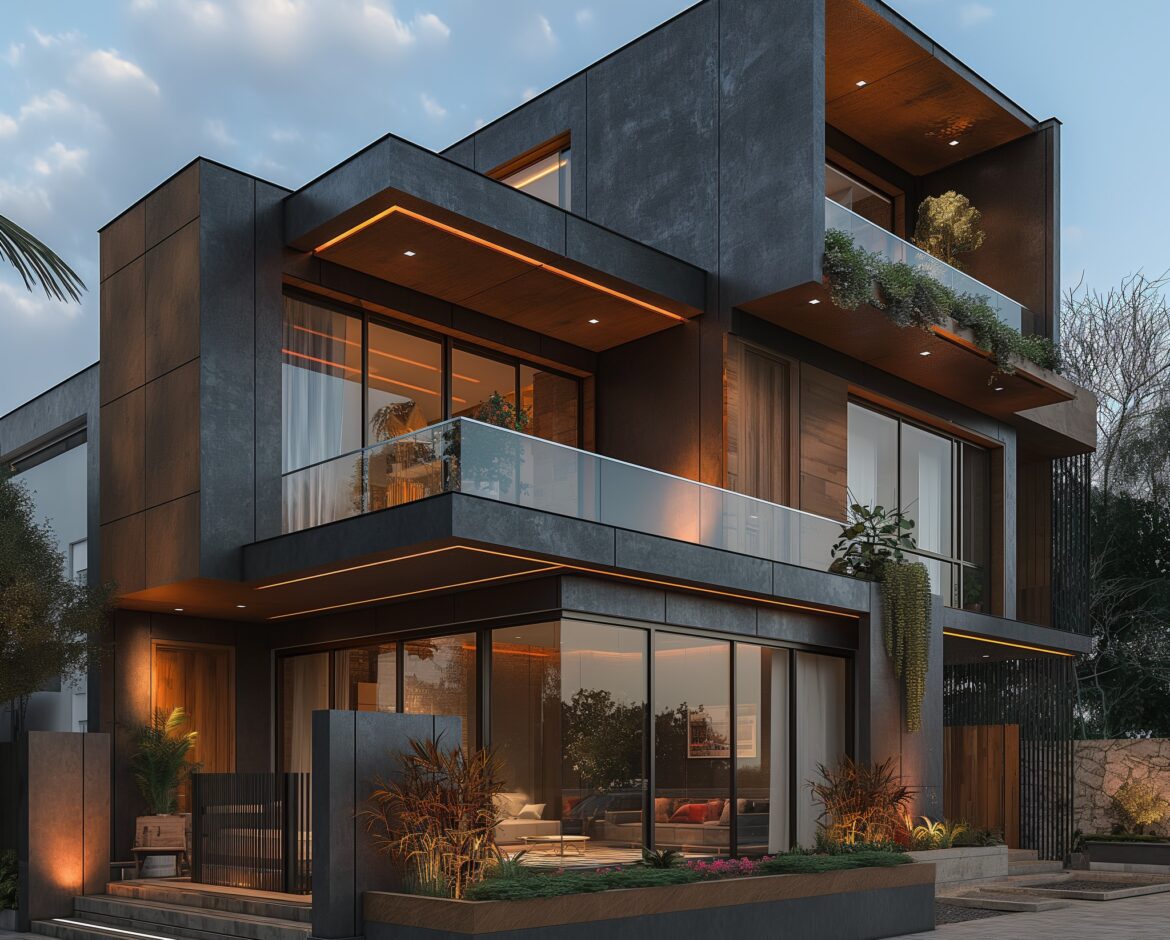Thinking of building a home? The question of “how much?” quickly reveals a complex web of variables far beyond simple square-meter estimates. From intricate architectural designs and unseen site conditions to the technical specifications of structural systems, facade materials, MEP installations, and interior finishes countless factors shape the final budget. Before embarking on this major investment, delve into our comprehensive analysis that unpacks these critical cost components and explores the essential principles of estimation and budget management in construction.
Unpacking the Costs: A Deep Dive into How Much It Really Costs to Build a House
Building a house is one of the most significant investments many people will ever make. Whether it’s a dream home tailored to specific needs or a practical dwelling, the question inevitably arises: “How much will it cost?” The answer, however, is far from simple. Unlike buying an off-the-shelf product, constructing a house involves a complex interplay of design choices, site specifics, material selections, labor, regulations, and market forces. This article aims to demystify the costs associated with building a house, exploring the myriad factors involved and breaking down the key cost components based on established construction principles and project management insights.
Why is Estimating House Costs So Complex?
Every construction project is unique. Even using identical plans, building the same house on two different sites will result in different costs. Factors like soil conditions, site accessibility, local labor rates, and material transport logistics immediately introduce variability. Furthermore, the definition of “a house” varies enormously – from a basic, functional structure to a complex, high-specification luxury residence.
The process of designing and building involves numerous participants: the owner (client), architects, engineers (structural, civil, building services), cost consultants (quantity surveyors), contractors, subcontractors, material suppliers, and regulatory bodies. Each party brings specialized knowledge, but effective coordination and communication are paramount to managing costs effectively. Poor coordination, misinterpretations, or delays inevitably lead to cost overruns.
Market dynamics also play a crucial role. Inflation affects material prices and labor wages. Demand surges can lead to material shortages and increased costs. Economic downturns might lower some costs but introduce risks regarding contractor stability. These external factors add layers of uncertainty to any initial estimate.
 Major Factors Influencing Construction Costs
Major Factors Influencing Construction Costs
Understanding the primary cost drivers is essential before delving into specific cost breakdowns. These factors interact and influence the overall budget significantly:
- Size and Scale: This is often the most significant determinant. Costs are frequently discussed per square meter (or square foot), but this is a simplification. Total floor area, the number of storeys, ceiling heights (affecting volume), and the overall footprint all impact material quantities and labor requirements. Larger, more complex footprints generally increase foundation and roofing costs disproportionately.
- Design Complexity: An intricate architectural design with non-standard shapes, complex roof geometry, numerous corners, bespoke features, or challenging structural requirements will invariably cost more than a simple rectangular structure. Cantilevers, large spans requiring specialized beams (like deep trusses or prestressed concrete), curved walls, or extensive glazing demand more sophisticated engineering, potentially costlier materials, and higher labor skills, all adding to the budget.
- Location: Geographical location heavily influences costs. Land prices vary dramatically. Construction costs differ regionally due to labor rates, material availability, and local regulations. Remote sites may incur higher transport costs for materials and labor. Urban sites might face logistical challenges, access restrictions, and potentially higher labor costs. Proximity to major roads and infrastructure is also a factor.
- Site Conditions: The nature of the building site is critical. Sloping sites require more extensive excavation, potential retaining walls, and complex foundation designs compared to flat sites. Poor soil conditions (like soft clay or black cotton soil prone to shrinkage/swelling) necessitate deeper or more elaborate foundations (e.g., piling, rafts) significantly impacting costs. High groundwater tables may require dewatering during construction and robust waterproofing for basements. The presence of existing structures needing demolition, contaminated soil requiring remediation, or difficult access for machinery also adds expense.
- Quality of Materials and Finishes: This is a major area where client choices directly impact the budget. Opting for high-end materials (imported marble vs. local ceramic tile, hardwood vs. laminate flooring, bespoke joinery vs. standard units, high-performance glazing vs. basic double glazing) and luxury finishes significantly escalates costs compared to standard or budget options. Durability is linked to cost – higher quality, more durable materials often have a higher initial cost but may reduce long-term maintenance expenses.
- Building Regulations and Standards: Modern construction must comply with increasingly stringent building codes covering structural integrity, fire safety, accessibility, and particularly, energy efficiency. Meeting high thermal insulation standards (low U-values), airtightness requirements, and incorporating energy-efficient heating, ventilation, and lighting systems adds to the initial cost, though designed to reduce operational costs over the building’s life. Permit fees and the cost of demonstrating compliance also contribute.
- Project Team and Procurement Route: The experience and efficiency of the design team (architects, engineers) and the chosen contractor influence the project’s smooth running and cost-effectiveness. Professional fees for design and supervision are a direct cost component. The procurement strategy (e.g., traditional tender, design-and-build, management contracting) affects when cost certainty is achieved, how risk is allocated, and can influence the final price.
- Market Conditions & Timing: Inflation can significantly impact costs between initial budgeting and construction commencement. Fluctuations in global markets affect the price of key materials like steel, cement, and timber. Labor availability and wage rates are subject to market forces. Building during a construction boom often means higher tender prices.
- Sustainability Goals: While often perceived as adding cost, sustainable construction techniques can sometimes be cost-neutral or even save money, particularly if integrated early in the design using passive strategies. However, specific green technologies (e.g., extensive photovoltaic arrays, advanced rainwater harvesting, geothermal systems) can increase initial capital costs, often justified by lower running costs or environmental benefits.
 Deconstructing the Costs: A Detailed Breakdown
Deconstructing the Costs: A Detailed Breakdown
A house building budget typically comprises several key categories:
- Pre-construction Costs:
- Land Acquisition: Often the single largest cost, though sometimes excluded from “build cost” discussions if the land is already owned. Highly location-dependent.
- Surveys & Site Investigations: Topographical surveys, geotechnical investigations (boreholes, soil testing) to determine ground conditions and inform foundation design.
- Design Fees: Fees for architects, structural engineers, building services engineers, cost consultants, and potentially other specialists (landscape architects, interior designers). Fees are often percentage-based but can be fixed or time-based.
- Permits & Approvals: Fees for planning permission, building regulations approval, utility connection applications, and potentially other statutory consents
- Site Preparation & Foundation:
- Site Clearance: Demolition of existing structures, removal of vegetation, dealing with any contamination.
- Excavation: Earthmoving to create required levels, trenches for foundations, basement excavation. Costs depend on volume, soil type, and disposal requirements.
- Foundations: Includes formwork, reinforcement, and concrete (or masonry/piling). The type (strip, pad, raft, piled) depends heavily on site conditions and building loads. Deeper foundations or those requiring specialized techniques (piling) significantly increase costs. Basement construction is substantially more expensive than standard foundations due to excavation, structural requirements, and waterproofing.
- Ground Floor Slab: Often concrete, may be ground-bearing or suspended depending on foundation design and site conditions.
 Structural Frame:
Structural Frame:- Walls (Load-bearing): Traditionally masonry (brick or block), offering durability and good thermal/acoustic mass but potentially limiting design flexibility. Costs depend on material choice, thickness, and labor. Timber frame construction offers speed but requires careful detailing for durability and fire resistance.
- Frame (Columns & Beams): Typically steel or reinforced concrete for skeleton frames, allowing greater design flexibility and larger open spans. Steel frames offer speed of erection (prefabricated components) but usually have a higher basic cost and require fire protection. Reinforced concrete frames offer mouldability for complex shapes and inherent fire resistance but involve more complex on-site work (formwork, reinforcement placing, curing time). Structural complexity (e.g., cantilevers, large spans) increases material quantities and cost.
- Upper Floors & Roof Structure: Can be timber joists, precast concrete planks, in-situ reinforced concrete slabs, or steel beams supporting decking. Roof structures range from simple timber trusses to complex steel frames or concrete slabs. Flat roofs require robust waterproofing and drainage systems.
- Building Envelope:
- External Walls (Non-loadbearing): In frame structures, this includes the cladding system and its support structure. Options range from masonry outer leaves to lightweight systems like timber cladding, metal panels, render systems (e.g., external thermal insulation composite systems – ETICS), or curtain walling (primarily glass and aluminum/steel framing, typically more expensive). Facade costs vary enormously based on material choice, complexity, and performance requirements (insulation, airtightness).
- Roof Finish: Tiles (concrete, clay), slates (natural, artificial), metal sheeting, single-ply membranes, or green roof systems. Costs vary with material, complexity, and durability.
- Windows & External Doors: Huge cost variation based on material (uPVC, timber, aluminum, composite), size, style, glazing specification (double/triple glazed, low-e coatings, acoustic glass, safety glass), security features, and hardware. High-performance units meeting stringent energy codes are costlier initially.
 Mechanical, Electrical & Plumbing (MEP) Systems:
Mechanical, Electrical & Plumbing (MEP) Systems:- Heating, Ventilation, and Air Conditioning (HVAC): Ranges from simple radiator systems (gas boiler) to complex air conditioning (chillers, air handling units, ductwork) or renewable systems (heat pumps). Costs increase significantly with complexity, level of control, and energy efficiency targets. Ventilation can be natural, mechanical extract, or full mechanical ventilation with heat recovery (MVHR).
- Electrical: Incoming supply, distribution boards, cabling, sockets, lighting (internal and external), fire detection/alarms, security systems, data/communication networks. Costs depend on the size of the house, number of circuits, quality of fittings, and complexity of control systems (e.g., smart home automation).
- Plumbing: Hot and cold water distribution, sanitary ware (toilets, basins, showers, baths), soil and waste pipes, potentially rainwater harvesting systems. Costs vary significantly with the quality and style of sanitary ware and fittings.
- Lifts/Escalators: Generally only relevant for larger or specialized houses, adding significant cost.
- Interior Finishes:
- Wall & Ceiling Finishes: Plastering/skimming, plasterboard (dry lining), paint, wallpaper, tiling. Costs depend on the type and quality of finish and the area covered.
- Flooring: Screeds, timber floorboards, engineered wood, laminate, tiles (ceramic, porcelain, stone), vinyl, carpet. Huge variation in material costs and installation labor. Underfloor heating adds cost.
- Internal Doors & Joinery: Standard vs. bespoke doors, architraves, skirting boards, built-in wardrobes, staircases. Material (softwood, hardwood, MDF) and complexity drive costs.
- Kitchen & Bathroom Fit-out: Cabinetry, worktops, appliances, tiling, sanitary ware. This is a major area of potential cost variation based on specification level.
 External Works & Landscaping:
External Works & Landscaping:- Drainage: Site drainage, connection to main sewers (foul and surface water).
- Paving & Driveways: Materials like asphalt, block paving, gravel, concrete.
- Landscaping: Topsoiling, planting (turf, shrubs, trees), hard landscaping features (patios, decks).
- Boundary Treatment: Fencing, walls, gates.
- Contractor Preliminaries: These are the contractor’s site-specific overheads and management costs, not directly related to the physical work items. They include site setup (offices, welfare), temporary services (water, electricity), site management staff, insurance, scaffolding, security, waste disposal, etc. Typically calculated as a percentage of the direct construction cost or itemized.
- Contingencies: An essential allowance (often 5-15% of construction cost) set aside to cover unforeseen problems, unexpected site conditions, or minor design changes during construction.
Cost Estimation and Budget Management
Accurate cost estimation evolves throughout the design process:
- Preliminary Estimates (Concept/Feasibility Stage): Often based on historical data for similar building types, using cost per square meter or cost per unit (e.g., per bedroom). These provide an early indication but have low accuracy. Benchmarking against published cost data (like the Davis Langdon handbook examples, used conceptually) can inform this stage.
- Elemental Cost Planning (Design Development Stage): The cost consultant breaks the design down into standard elements (e.g., foundations, frame, roof, walls, windows, finishes, services) and allocates costs based on approximate quantities and rates. This allows for better cost control as the design develops, enabling comparison of different options for specific elements (e.g., comparing steel vs. concrete frame costs).
- Detailed Estimates / Bills of Quantities (Technical Design Stage): Once the design is sufficiently detailed, precise quantities of materials and labor are measured according to a standard method of measurement (SMM). These quantities are priced by tendering contractors (or the cost consultant for pre-tender estimates) using current market rates for materials, labor, and plant. This forms the basis for the tender price or Contract Sum.
Effective cost management relies on continuous monitoring and control:
- Designing to Cost: The design team actively considers cost implications during design development, guided by the cost consultant and the established Cost Plan. Value management exercises might be held to identify potential savings without compromising essential quality or function.
- Change Control: Once a design stage is approved, any subsequent changes initiated by the client or necessitated by design evolution must be managed through a formal change control process. The cost implications of proposed changes are evaluated before they are approved, preventing uncontrolled budget creep.
- Cost Reporting: Regular cost reports track actual expenditure against the budget/Cost Plan, forecast the final cost, and highlight potential over- or under-spends, allowing for corrective action.
- Managing Construction Costs: During the construction phase, the focus shifts to managing payments based on work completed, valuing variations (changes instructed by the Engineer/Architect), assessing contractor claims for additional time or cost, and agreeing on the final account upon project completion.
Conclusion: Planning for Predictability
Building a house is a major undertaking with significant financial implications. While providing an exact figure upfront is impossible due to the variables involved, understanding the key cost drivers and the breakdown of expenses empowers potential homeowners and developers to make informed decisions.
The cost is fundamentally shaped by the choices made regarding size, complexity, location, quality, and the specific site conditions encountered. Detailed planning, starting with a realistic Project Budget and developing through robust Cost Plans, is crucial. Engaging experienced professionals – architects who understand buildability and cost implications, engineers who design efficient systems, and cost consultants who provide accurate estimates and proactive cost management – is essential.
Furthermore, effective project management throughout the design and construction phases, including clear communication, collaboration between all parties, rigorous cost control, and proactive risk management, is vital to keep the project on budget. By appreciating the technical details, managing the process diligently, and making informed choices, the cost of building a house can be better predicted and controlled, turning the aspiration into a successfully realized and affordable reality.
About ARTILETT:
ARTILETT champions the thoughtful integration of contemporary design, technical innovation, and contextual sensitivity in creating unique architectural and interior environments.
Find more suggestion to build house @ Residential architecture
#BuildingCosts #HouseConstruction #HomeBuilding #CostEstimation #ProjectManagement #ArchitectureCosts #HomeDesignCosts #MEPCosts #StructuralCosts #SiteWorkCosts #HomeBuildingTips

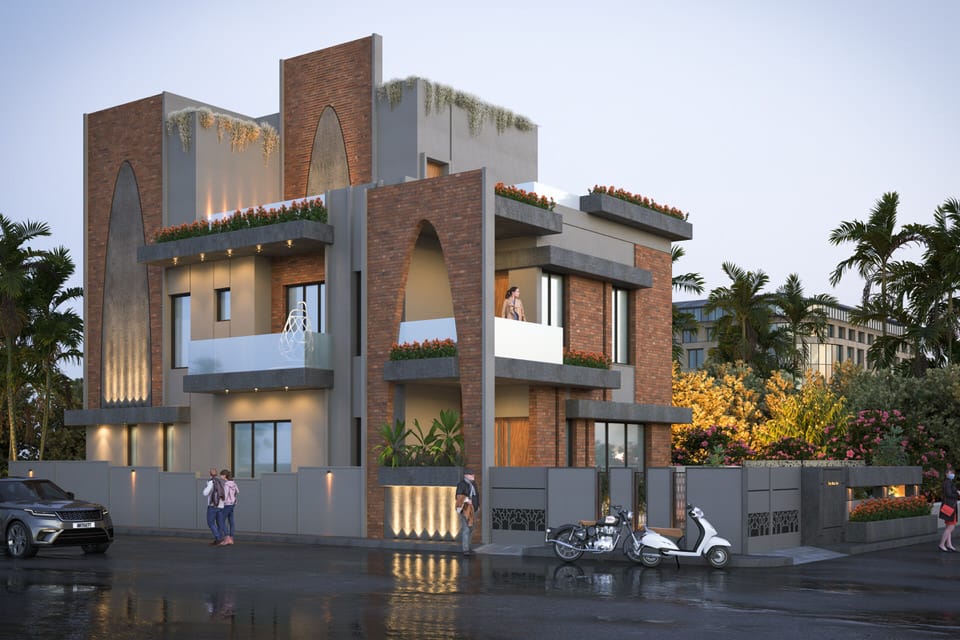
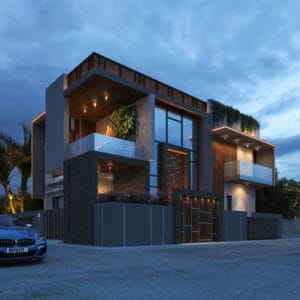


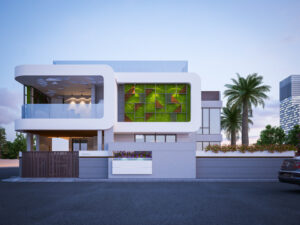
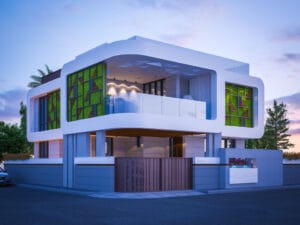 External Works & Landscaping:
External Works & Landscaping:


